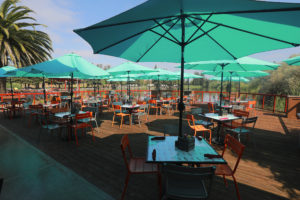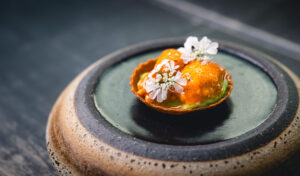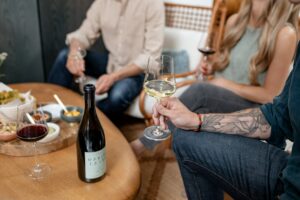Trousseau Gris. Arneis. Nero D’Avola. The names roll off the tongue heftily, with a hint of swagger and a suggestion of the Old World. In a country where just three varieties of winegrapes—Chardonnay, Pinot Noir, and Cabernet Sauvignon—account for three-fourths of the yearly crop, there’s a thrill in discovering these other flavors and histories.
For many winemakers, the allure lies in seeking out pockets of nearly-forgotten fruit, vines that have survived the ups and downs of evolving industry trends. Darek Trowbridge of Old World Winery honors a family heirloom when he works with the rare Abouriou vines his grandfather planted a century ago. For others it’s about broadening horizons. “You wouldn’t listen to the exact same music every single day, or eat the same food, or drink the same drink,” says Scott Schultz of Jolie-Laide Wines. “Why limit yourself to just a few grapes?”
And for nearly all, it’s a call to action—a response to warmer temperatures and hope in finding new varieties to cultivate, ones with the potential to thrive in a changing climate.

The Winemaker
Sam Bilbro, Idlewild Wines
Sam Bilbro’s passion for wines from Italy’s Piedmont region could be the wine industry’s answer to climate change in Northern California. As winemaker and owner of Idlewild Wines, Bilbro was happy to discover Piedmont grape varieties grow exceptionally well in areas of Northern California, where many have less mildew pressure, lower water needs, and naturally high acidity that can balance the sugar of a hot growing season.
“Most of the wines out there are tied to market demand; that’s why many people are less inclined to experiment with new grapes,” says Bilbro. “But we need to refocus what we’re planting because of climate change. And weather isn’t just getting warmer—there is more variability. Someday, we might get more rain in the summer or colder winters. We need more diverse plantings in the vineyards because we need to hedge our bets.”
For Bilbro, that means working with grapes like Arneis, Barbera, Freisa, Grignolino, and Favorita, which he sources from Mendocino’s Yorkville Highlands, Russian River Valley, the North Coast, and beyond. Now, other wineries are asking whether he has any fruit to sell or advice on what to plant.
“If we’re talking about planting new varieties so we can adapt to climate change, I think we also need to talk about diversity in the vineyard, healthy soils, fungi— and even treatment of our labor force. It’s encouraging to hear people talking about change in the wine industry. But it’s really about creating a much healthier system overall.”
Idlewild Wines, 132 Plaza St., Healdsburg. 707-385-9410, idlewildwines.com
Rare Vineyards to Know
Sherry Martinelli Vineyard
Location: Russian River Valley | Variety: Abouriou | Size: 4 Acres
Planted 80 years ago by pioneering vintner Giuseppe Martinelli, this venerable block of head-pruned Abouriou vines is now meticulously cared for by Martinelli’s great-grandson, winemaker Darek Trowbridge of Old World Winery.
Trowbridge was excited to work with the uncommon variety, which is thought to have origins in the Lot-et-Garonne region of southwest France. No one knows exactly how the 4 acres of Abouriou ended up in Sonoma County, but Trowbridge suspects his Italian immigrant great-grandfather planted it as part of a field blend.
“At first, I had no idea what the heck it was,” Trowbridge says. “DNA testing pointed to Blue Portuguese, but it’s nothing like that grape. It’s a big, burly, rustic grape with deeply concentrated skins. And it’s gamey—almost like Lambrusco—with distinct cherry flavors.” His current Abouriou release, the 2014 Luminous, is for sale through his website.
The TTB, the government agency that taxes and regulates alcohol sales, officially recognizes Abouriou as “Early Burgundy,” and, much to Trowbridge’s chagrin, they insisted he list that name on the label. But that won’t stop him from experimenting with the exceedingly rare family heirloom.
Old World Winery, 850 River Road, Fulton. 707-490-6696, oldworldwinery.com

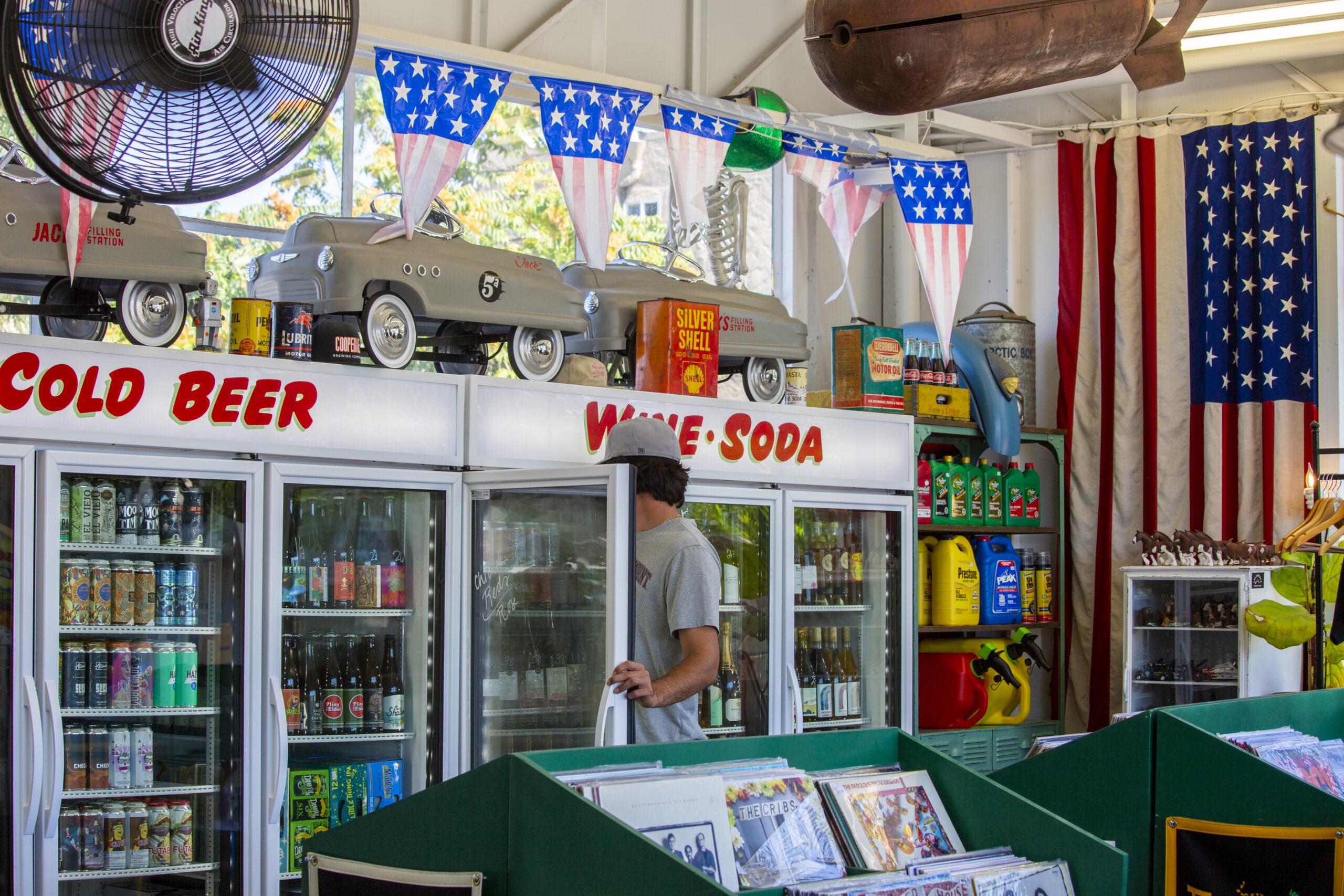
Favorite Bottle Shops for Uncommon Wines
Avinage: 15 Petaluma Blvd. North, Petaluma. 707-774-6080
Ciao Bruto: 130 Plaza St., Healdsburg. 707-756-3918
Jack’s Filling Station: 899 Broadway, Sonoma. 707-996-2044
Miracle Plum: 208 Davis St., Santa Rosa. 707-708-7986
Bottle Barn: 3331-A, Industrial Dr., Santa Rosa. 707-528-1161
Spotlight on Fiano
Fiano is considered one of the finest white wines of Italy, where it’s best known in the Campania region, in the appellation of Avellino. The variety dates back more than 2,000 years, and wine historians believe it was cultivated in ancient Rome. The medium to full-bodied wine is redolent of flowers, pear, honey, and hazelnuts, with surprisingly crisp acidity and minerality.
Three to try:
Unti Vineyards 2021 Fiano, Dry Creek Valley ($35)
Cruess 2018 Fiano, Russian River Valley ($28)
Gros Ventre Cellars 2021 Fiano, Sonoma Coast ($38)
Rare Insight
California Wine Country Podcast
Commentators Dan Berger and Steve Jaxon are joined on their show by some of Sonoma County’s most influential winemakers. Gain insight on new, rare, or historical grape varieties growing in the region and people bringing positive change to the industry. Wednesdays, 5-6 p.m. on KSRO or through podcast apps.

More of What’s Next…
Arneis, Italy/White: Native to Italy’s Piedmont region, Arneis is nicknamed “little rascal” due to its fussiness in the vineyard. Brought back from the brink of extinction in the 1960s, the grape produces floral, full-bodied white wines with notes of pear, apple, and apricot. Who works with it? Seghesio Family Vineyards, Healdsburg. seghesio.com
Lagrein, Italy/Red: In 1370, the Holy Roman Emperor Charles IV sang the praises of this robust grape from Alto-Adige, which nearly disappeared in the 1970s. It produces hearty, deeply-hued wines with black cherry, blackberry, black pepper, and fresh acidity. Who works with it? Imagery Estate Winery, Glen Ellen. imagerywinery.com
Cabernet Pfeffer, France/Red: The origin of the Cabernet Pfeffer grape was shrouded in mystery until recent genetic analysis revealed it’s a variety also called Mourtaou. Exceedingly rare, the bright, peppery grape is now grown primarily in San Benito County. Who works with it? Bedrock Wine Company, Sonoma. bedrockwineco.com
French Colombard, France/White: A cross between Chenin Blanc and Gouais Blanc, French Colombard originated in southwest France, where it’s used primarily in Cognac and Armagnac. The fruit has bright acidity with nuances of tart green apple, melon, and peach with a hint of almond. Who works with it? Meadowcroft Wines, Sonoma. meadowcroftwines.com
Biancolella, Italy/White: Biancolella is grown primarily on the island of Ischia off Italy’s Amalfi Coast, where coastal influences and volcanic soils produce an aromatic wine with great minerality, ample acidity, and flavors of white stone fruit and almond. Who works with it? Unti Vineyards, Healdsburg. untinvineyards.com; Orsi Family Vineyards, Healdsburg. orsifamilyvineyards.com
Nerello Mascalese, Italy/Red: Commonly found on the volcanic slopes of Mount Etna in Sicily, Nerello Mascalese has been compared to Pinot Noir for its juicy, red fruit and vibrant acidity, with dried herbs and spice on the finish. Aeris Wines in Healdsburg is the first to grow this variety in California. Who works with it? Aeris Wines, Healdsburg. aeriswines.com
Malvasia Bianca, Italy/Greece/White: Believed to be of ancient Greek origin, Malvasia Bianca is part of a family of Malvasia grapes that have been grown in Italy since the Middle Ages. Used for sparkling, dry, and dessert wines, it is intensely floral with ripe tropical fruit notes, pear, and bright acidity. Who works with it? Edaphos by Ernest Vineyards, Windsor. edaphoswines.com
Saint Laurent, Austria/Red: Indigenous to Austria, Saint Laurent is a rare red variety potentially related to Pinot Noir. Ricci Vineyards in Los Carneros is believed to be the only commercial grower of the variety in the United States. It’s a dark, fruity wine with cherries, blackberries, and spice. Who works with it? Ricci Vineyards, Los Carneros. riccivineyards.com
Nero d’Avola, Italy/Red: The most widely planted grape in Sicily, Nero d’Avola is a droughttolerant, heat-loving grape with great potential in California. Deep in color, it is used to produce two wine styles: One is fresh and juicy with flavors of plum and red fruit; the other is dark and dense with notes of deep raspberry and cacao. Who works with it? Martha Stoumen, Sebastopol. marthastoumen.com
Ribolla Gialla, Italy/White: Ribolla Gialla is believed to have originated in the Friuli region of Italy, where it was first documented as early as 1289. In great decline post-phylloxera, the grape has seen a resurgence as winemakers embrace its bright acidity and flavors of citrus, peach, and apple. Who works with it? Preston Farm & Winery, Healdsburg. prestonofdrycreek.com
Rare Vineyards to Know
Red Ranch
Location: Alexander Valley | Variety: Saint Macaire | Size: 1/2 Acres
Saint-Macaire, an obscure red grape native to Bordeaux, is grown in just two spots in the United States, including this half-acre parcel at Hanna Winery in Alexander Valley. Planted from budwood sourced from O’Shaughnessy Estate Winery in Napa, the Saint-Macaire vines produce deeply dark fruit with firm tannins, high acid, and distinct aromas of Kalamata olive, sarsaparilla, and ginseng.
“The grapes are completely different than anything else I’ve come across,” says Hanna winemaker Jeff Hinchliffe, who planted the 600 vines in 2010. “Its color is completely off the charts and the high tannins almost remind me of a Petit Verdot.” Hinchliffe is also struck by how early Saint-Macaire ripens and its ability to retain acidity in the heat, an important consideration with a changing climate. He is planning to expand the planting in the future.
“It’s really unique because it doesn’t have any distinct fruit characters that are easy to pinpoint,” says Hinchliffe. “But it offers deliciousness with a different twist.”
9280 Highway 128, Healdsburg. 707-431-4310, hannawinery.com
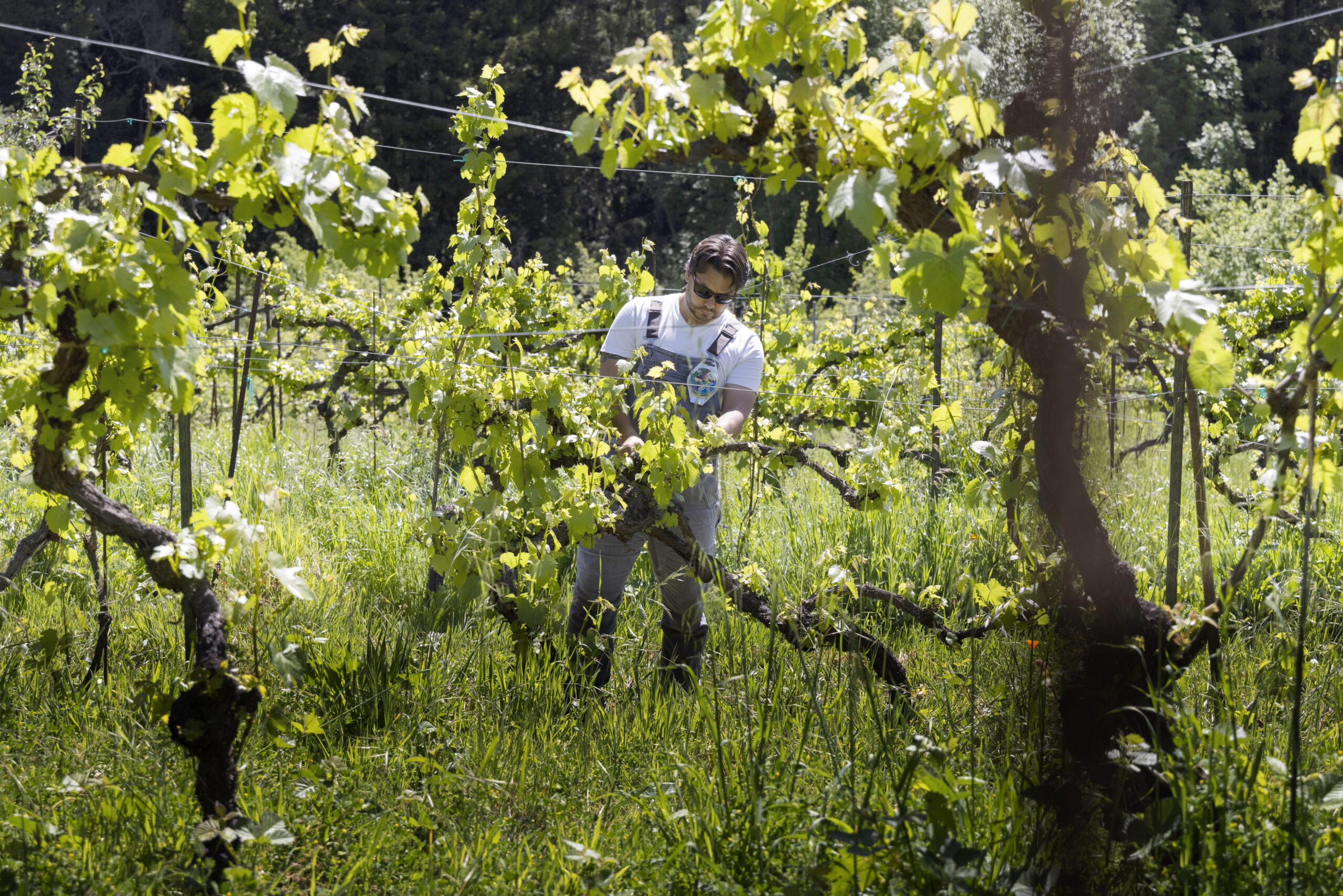
The Winemaker
Matthew Niess, North American Press
With little resistance to a variety of pests, fungal diseases, temperature fluctuations, and drought, Vitis vinifera is a curious grape species to grow in North America. But all European grape varieties— from Albariño to Zinfandel—are Vitis vinifera, the most commonly cultivated grape species in the world. “There is so much diversity on the grape spectrum to play with,” says Matthew Niess, winemaker at North American Press, who works with native hybrids instead. “We have at least 20-30 native species in the United States alone. Why aren’t we making wine with these?”
When Niess set out to answer this question, he found no one to talk to. So he decided to start experimenting on his own. While an assistant winemaker at Radio-Coteau, he came across nearly an acre of Baco Noir, a hybrid of Vitis vinifera and Vitis riparia, an indigenous North American species. The owner let Niess manage the vineyard, and in 2020 he used the fruit to make 85 cases of a 100% Baco Noir wine he calls The Rebel.
“When people talk about disease-resistant fruit, this is what they’re talking about,” says Niess. “These vines evolved to grow well here, so they’re naturally disease resistant. I don’t have to spray them at all. Ever.”
Not only that, Niess discovered the naturally high acid content of Baco Noir meant he didn’t have to worry as much about balancing the high sugar levels that can come in a hot growing season.
Today, Niess owns an experimental vineyard in Dry Creek Valley planted to 40 grape varieties—all hybrids of traditional European Vitis vinifera and native North American species. “I think grape breeding is going to become much more important moving forward,” says Niess. “Beyond a shadow of a doubt, these hybrids are more robust, and many are drought tolerant. Overall, they’re going to be a more sustainable option.”
North American Press, northamericanpress.wine
Spotlight On Trousseau Gris
A color mutation of the red Trousseau grape from the Jura in eastern France, Trousseau Gris used to be more common in California, when it was often misidentified as Gray Riesling. Today, only two vineyards continue to cultivate this rare variety in California, including one in Sonoma County’s Russian River Valley. Trousseau Gris is a light, refreshing wine with notes of summer peach, melon, and natural acidity.
Three to try:
Two Shepherds 2021 Trousseau Gris, Russian River Valley ($32)
Pax 2021 Trousseau Gris, Russian River Valley ($30)
Zeitgeist 2021 Trousseau Gris, Russian River Valley ($32)
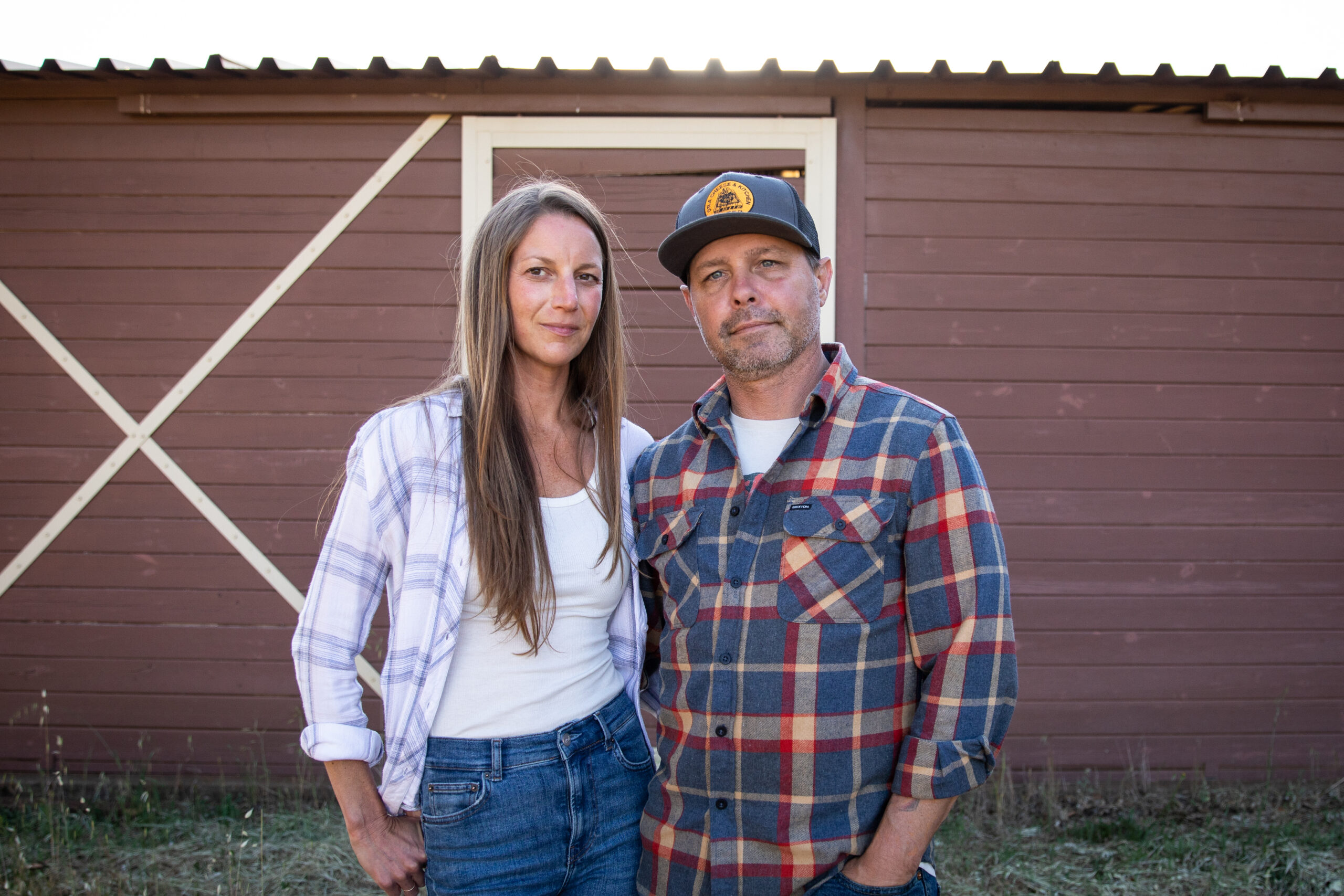
The Winemakers
Scott and Jenny Schultz, Jolie-Laide Wines, Healdsburg
Winemaker Scott Schultz was blown away when he discovered most wine drinkers limit themselves to just a handful of varietals. Originally from Chicago, where he worked at a number of high-end restaurants with diverse wine lists, he was taken aback by the monotony of many California wine drinkers.
“You wouldn’t listen to the exact same music every single day, or eat the same food, or drink the same drink,” he says. “Why limit yourself to just a few grapes? It’s a big wine world out there.”
At Jolie-Laide Wines in Healdsburg, Schultz and his wife and business partner, Jenny Schultz, focus on what they like to drink: fresh, minimally manipulated wines with grapes uncommon in the New World, like Trousseau Gris, Bianchetta Trevigiana, Cabernet Pfeffer, and Melon de Bourgogne.
Sourcing uncommon varieties can be like a game of hide and seek, and Scott and Jenny often find themselves traveling to small, far-away vineyards to obtain fruit. But maybe that’s part of the draw—it’s like a treasure hunt for winemakers.
“When we first started making these wines, many people looked at us sideways,” says Scott. “But we work hard to keep our wines tasting fresh and clean so that often appeals to people. For those who keep an open mind, they’re often pleasantly surprised when they try our wines. Now there are many people who like them.”
Jolie-Laide Wines, jolielaidewines.com
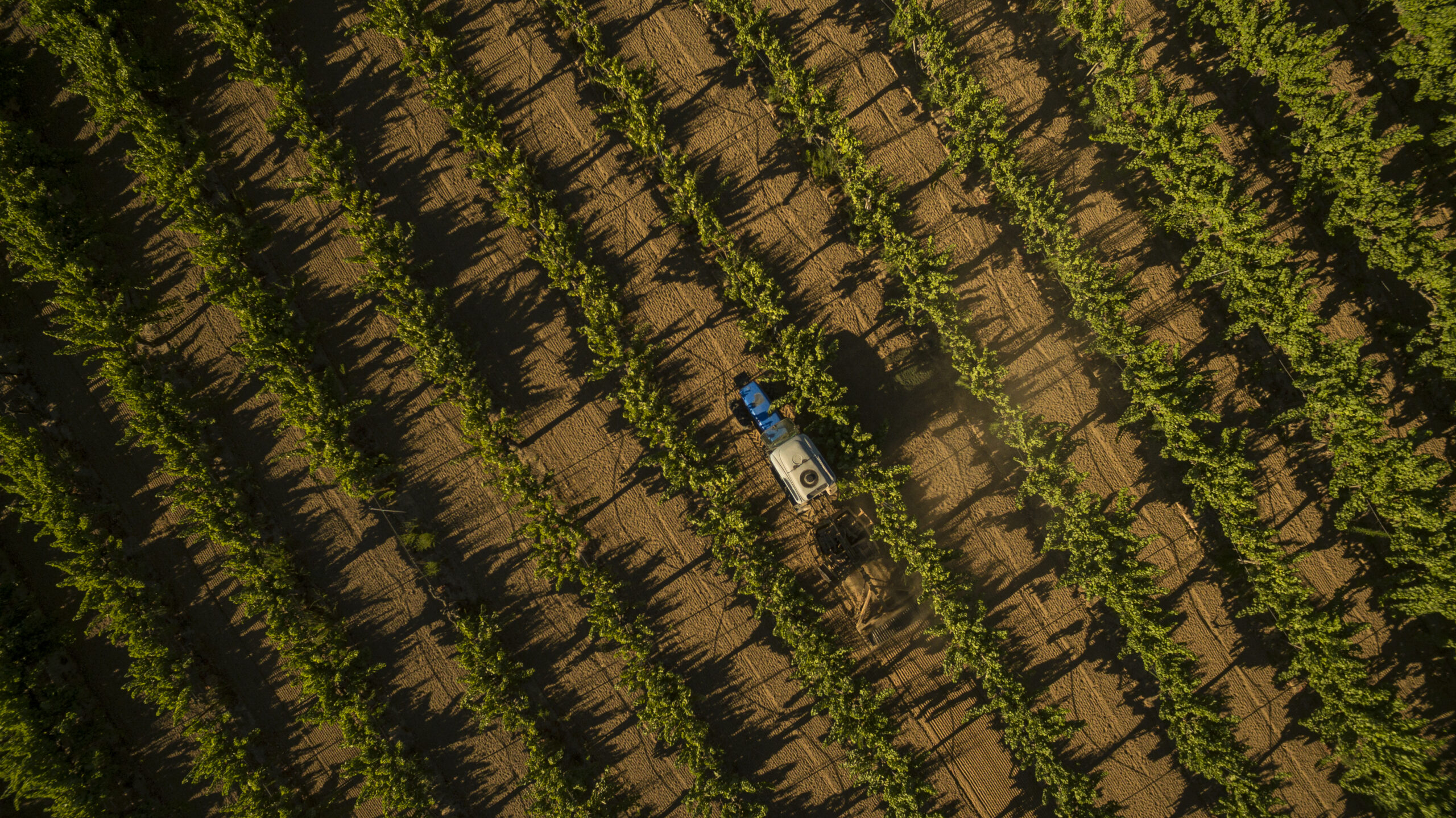

Rare Vineyards to Know
Fanucchi-Wood Road Vineyard
Location: Russian River Valley | Variety: Trousseau Gris | Size: 10 acres
Peter Fanucchi’s Trousseau Gris vineyard is highly prized among a select few Sonoma County winemakers who are lucky enough to call dibs on the only significant planting in the United States. Native to the Jura region of eastern France, Trousseau Gris is a color mutation of Trousseau Noir, which produces clusters in a rainbow of hues: midnight purple, mottled lime green, orange red, and dusty plum. And unlike other varieties, macerating the juice on its skins doesn’t make a rosé.
But for Sonoma winemakers like Pax Mahle, William Allen of Two Shepherds, Mark Porembski of Zeitgeist Cellars, and Scott Schultz of Jolie- Laide, that’s a moot point. Each is drawn to the rare varietal’s unique personality—a personality that each winemaker defines in his own way.
Planted in 1981 by Peter Fanucchi’s father, Arcangelo, the 10-acre Fanucchi-Wood Road Vineyard is now managed entirely by Peter. Yielding about 6 tons per acre, the highly coveted vines produce fruit for about 10 different winemakers who each clamor for their annual share.
“It’s getting harder and harder to be a small grower like me,” says Fanucchi, who also grows old-vine Zinfandel. “I’m the one driving the tractor and doing all the work. But I love working with nature, and with this size vineyard, I’m able to switch gears easily and do what nature demands.”

Uncommon Blends
Some rare grape varieties find balance in the comfort of others. Some of our favorite rare-varietal blends:
Abbot’s Passage 2020 Sightline (Chenin Blanc, Verdejo) $35, abbotspassage.com
Jolie-Laide 2021 Red Wine (Trousseau Noir, Cabernet Pfeffer, Valdiguié, Gamay) $ 43, jolielaidewines.com
Old World Winery 2015 Abundance (Muscadelle, Abouriou, Zinfandel, Mondeuse Noire, Trousseau Gris, and Chasselas). $45, oldworldwinery.com
Preston Farm & Winery 2020 White Wine (Sauvignon Blanc, Ribolla Gialla, Tocai Friulano, Garganega, Ansonica) $38, prestonfarmandwinery.com
Unti Vineyards 2021 Petite Rosé (Mourvedre, Fiano, Falanghina) $22, untivineyards.com
Rare Vines for Study
At Santa Rosa Junior College’s Shone Farm in the Russian River Valley, viticulture students work with 52 different rare grape varieties, from Catawba to Dolcetto to Muscat Orange, on the property’s 1-acre educational vineyard.
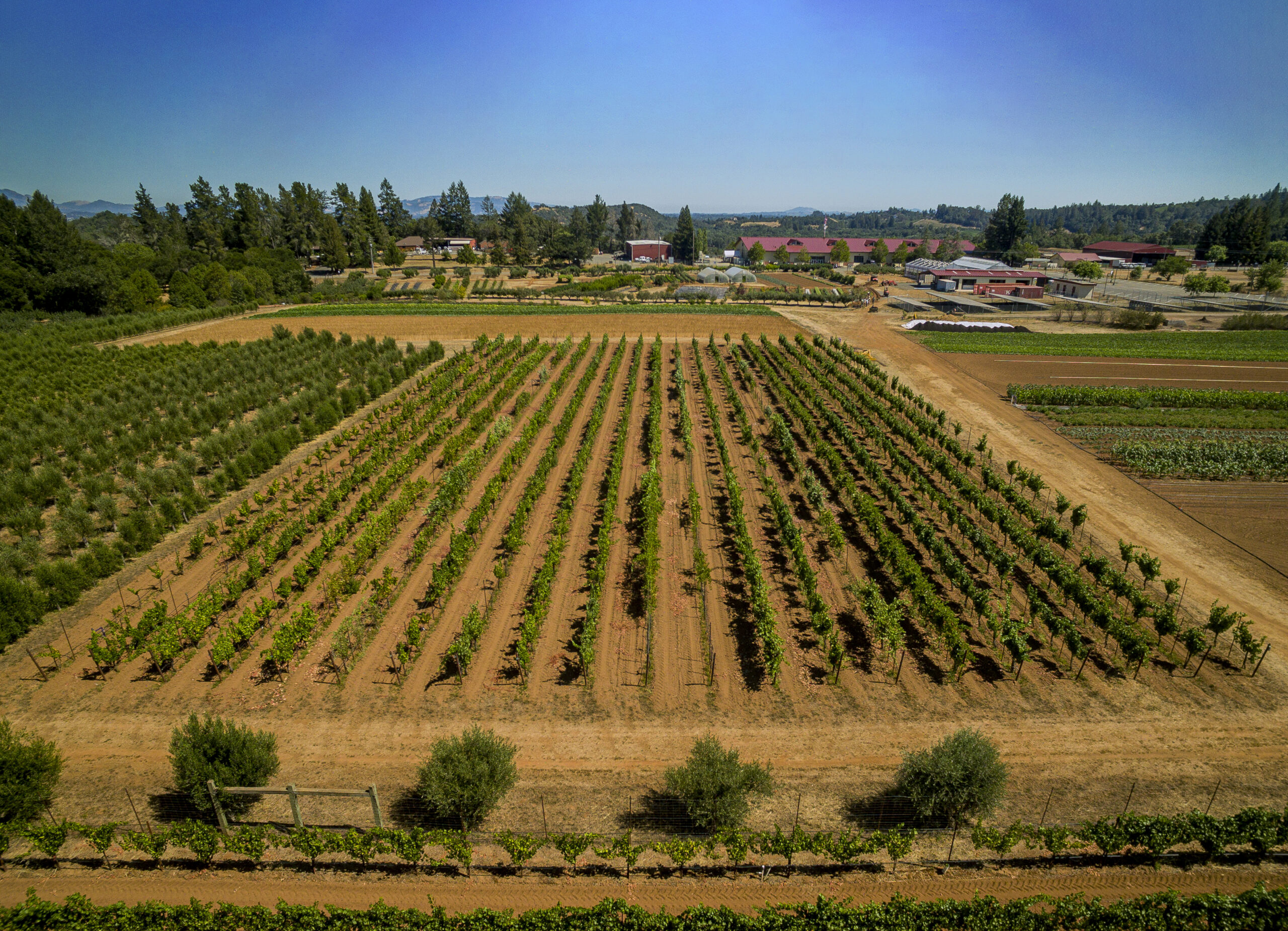
Spotlight on Aglianico
Aglianico is considered one of southern Italy’s most esteemed red grapes. Grown primarily in the regions of Campania and Basilicata, the dark red fruit produces a robust, savory wine with generous acidity that’s built for aging. Food pairings include rich meats like beef stew or game, pasta puttanesca, and roasted mushrooms.
Four to try:
Unti Vineyards 2018 Aglianico, Dry Creek Valley ($50)
Hobo 2019 Aglianico, Branham Vineyard, Rockpile ($30)
Orsi Family 2018 Aglianico, Dry Creek Valley ($44)
Ryme 2021 Aglianico Rosé, Clarksburg ($26)
Sonoma County Wine Library
The Sonoma County Wine Library is a hidden gem for those seeking to expand their knowledge of rare grape varieties grown locally, with wine artifacts and over 5,000 specialty books, including one that dates to the 15th century.
139 Piper St., Healdsburg. 707-433-3772, sonomawinelibraryassn.org
Rare Vineyards to Know
Juice Beauty Farm
Location: Dry Creek Valley | Variety: Falanghina | Size: Less than 1 acre
Indigenous to the Campania region of southern Italy, Falanghina is a white grape believed to have origins in ancient Rome, where it was used in a popular wine known as Falernian. While it’s extremely rare outside Italy, Falanghina is well suited to the warm, dry climate of Sonoma County’s Dry Creek Valley, which is where Dick Handal and Lisa Denier planted it in 2011. Handal had spent a lot of time in Italy and yearned to plant an Italian varietal in his home vineyard. He’d always enjoyed the bright acid and full flavor of Falanghina and thought it could handle the hot climate of western Dry Creek.
“I initially struggled to figure out how the vines wanted to be trellised and pruned,” says Handal, who sourced the budwood from UC Davis’s Foundation Plant Services. “But it was a great learning experience and well worth it. It’s an extremely rare variety that thrives in the heat and grows huge clusters and a vigorous canopy that helps prevent sunburn.”
In 2016, the winemakers at Arnot-Roberts began working with Dick Handal’s Falanghina, resulting in a wine with surprisingly fresh, bright acidity given the hot climate. Recently, the Handal-Denier vineyard was sold to new owners, who have renamed the location Juice Beauty Farm, and say they’re excited to continue to explore the potential of this antique variety now gaining all sorts of new fans.
Arnot-Roberts, Healdsburg. 707-433-2400, arnotroberts.com

The Winemakers
Ryan and Megan Glaab, Ryme Cellars
When an unexpected ton of Aglianico grapes became available in 2007, winemakers Megan and Ryan Glaab jumped at the chance to work with the uncommon Italian variety.
“We had no idea what we were doing at the time,” says Megan Glaab, who runs Ryme Cellars with her husband, Ryan. “But we’ve always been drawn to southern Italian varieties like Aglianico. It has such a compelling structure, with spice, dark fruit, and acid that holds its integrity in the heat. It’s what we like to drink.”
That Aglianico would become the catalyst for the launch of Ryme Cellars, a Sonoma County winery that focuses primarily on Italian varieties uncommon in California, like Vermentino, Fiano, and Ribolla Gialla.
“There are at least 600 Italian grape varieties, and I find it very exciting to learn and explore a new flavor profile,” says Megan. “In the tasting room, we commonly host guests who want to try something new. I think people get sick of tasting the same wines all the time.”
Megan Glaab says she’s witnessed a big push among winemakers who want to work with less common wine grapes and hopes to see plantings continue to diversify.
“The variety makes Sonoma County even more interesting,” she says. “And as the planet warms up, it would be really nice to have new grapes to explore.”
Ryme Cellars, 6450 First St., Forestville. 707-820-8121, rymecellars.com
What’s Old Is New
The Mission Grape
The Mission grape was the first cultivated European species in North America, where it was brought to Mexico from Spain during the 16th century. About 200 years later, it was introduced to California by Spanish missionaries who used the hardy, drought-resistant grape to make sacramental wine.
While only 400 acres of Mission remain planted today, the grape has begun a quiet resurgence as consumers and winemakers continue to look to heritage grapes for something “new.” In Sonoma County, Scribe produces two Mission wines: a still and a sparkling, both served lightly chilled.
Scribe Winery, 2021 Estate Mission. Sonoma Valley. $48. scribewinery.com
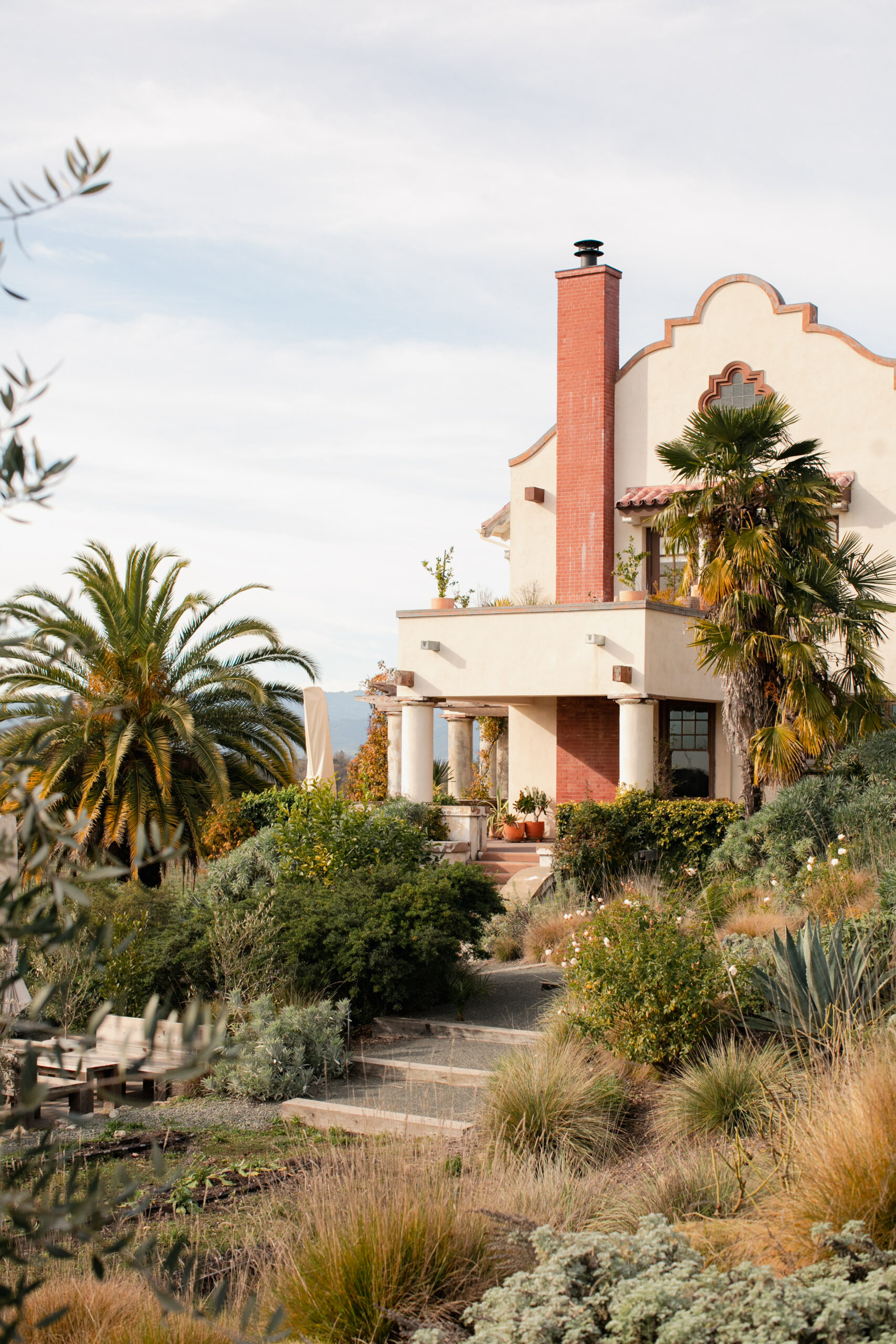
Spotlight on Valdiguié
In 1980, DNA testing revealed the “Napa Gamay” growing in California was actually Valdiguié, a red grape once cultivated extensively in the Languedoc-Roussillon region of southern France. With bright red fruit and healthy acidity, Valdiguié is often vinified into rosé or fresh, Beaujolais-style wines that are served with a slight chill. That said, wines of greater concentration exist, too.
Three to try:
An Answer to Climate Change?
As weather patterns become more unpredictable and the climate continues to warm, a growing number of California winemakers believe untried, hybrid, and indigenous grape varieties could be the answer. Winemaker Sam Bilbro of Idlewild Wines is working with certain Piedmontese varieties that need less water, like Aglianico and Sagrantino, as well as others that maintain acid during a hot growing season, like Barbera, Arneis, and Fiano.
“Fiano can hold acid better than any Chardonnay can,” says Bilbro. “If it comes in with acidity, you don’t have to manipulate it as much in the cellar.” He also finds some Italian varieties have lower mildew and farming pressure, which means there is less need for spraying.
“More weather variability is coming,” says Bilbro. “We need to be planting grapes that allow us to work with nature rather than against it.”


